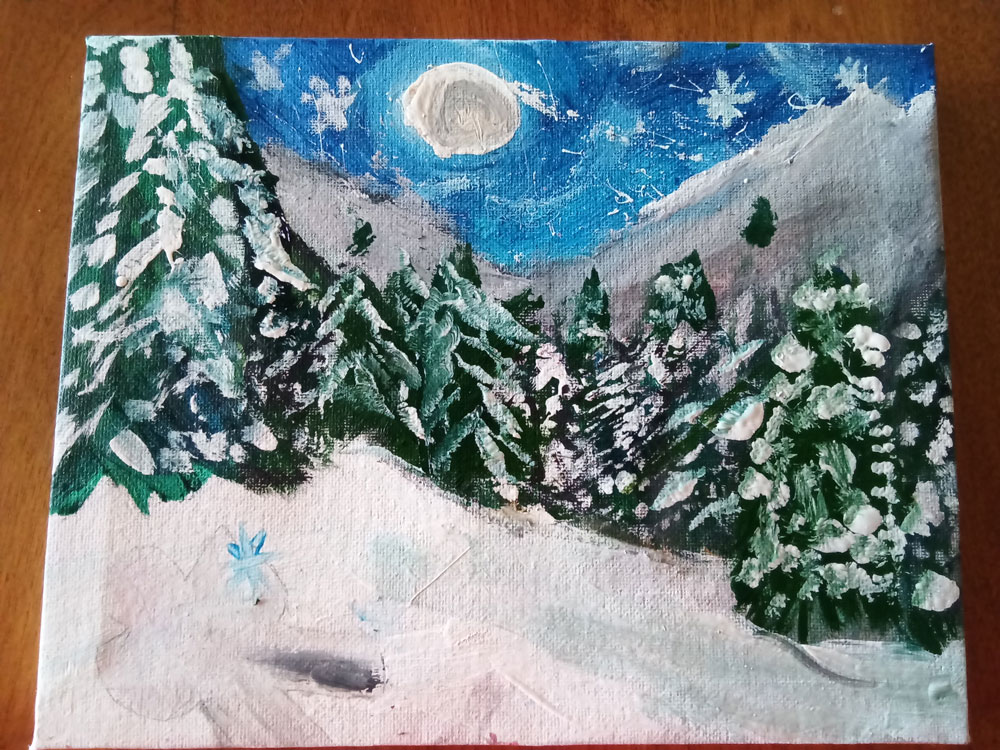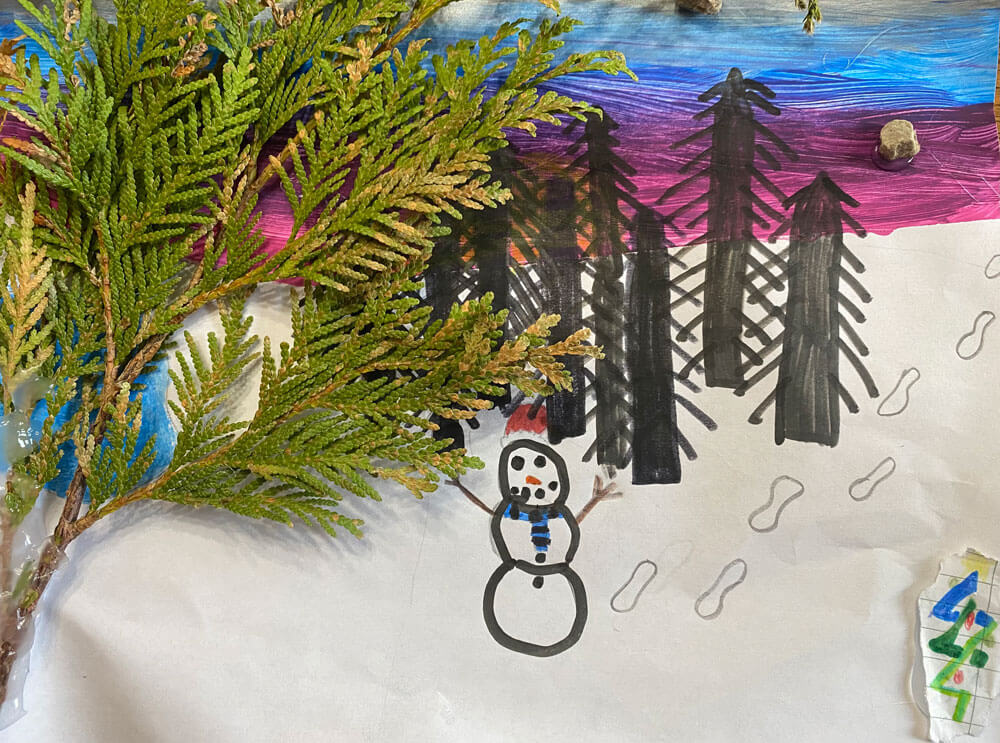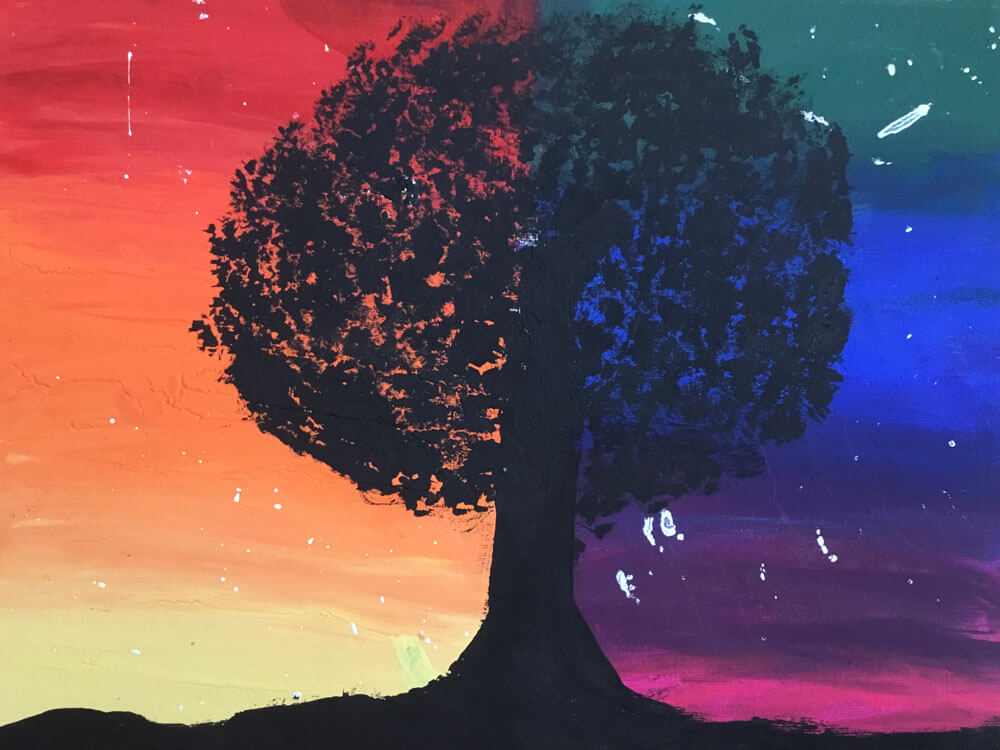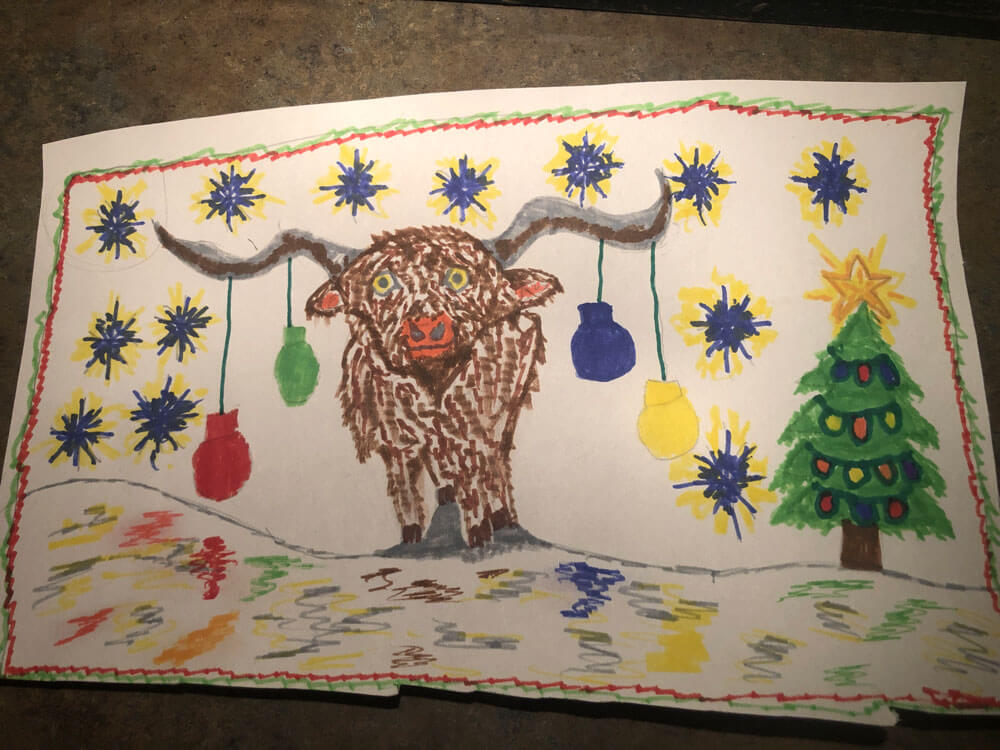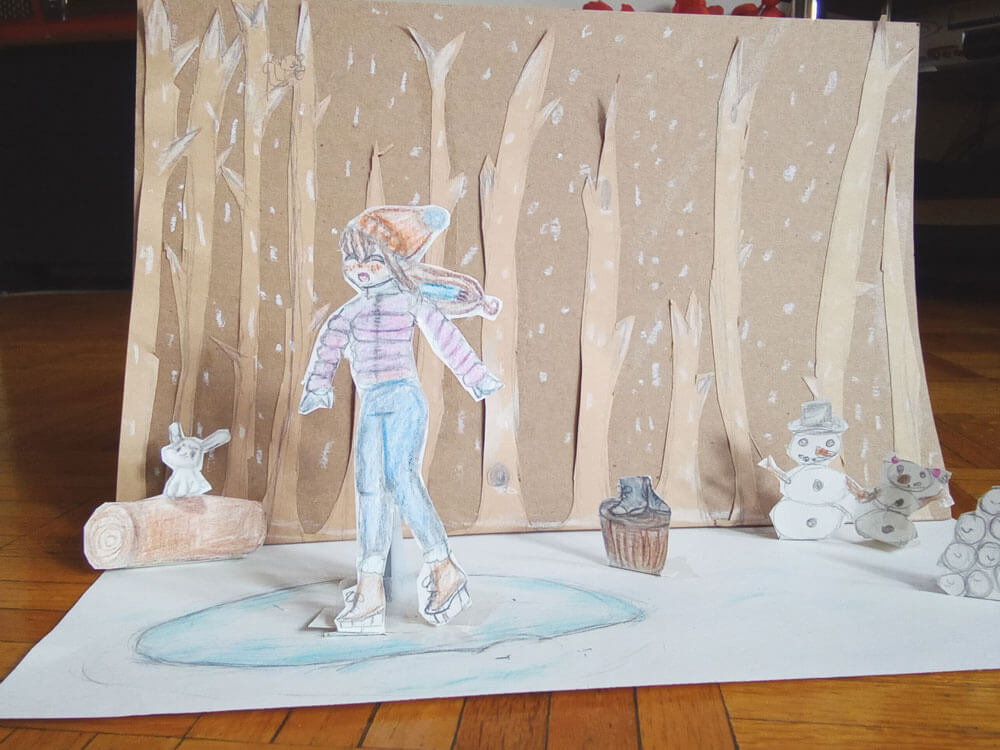Let’s put your identification skills to the test! Can you figure out what is hidden in this picture? Make your guess in the comments.
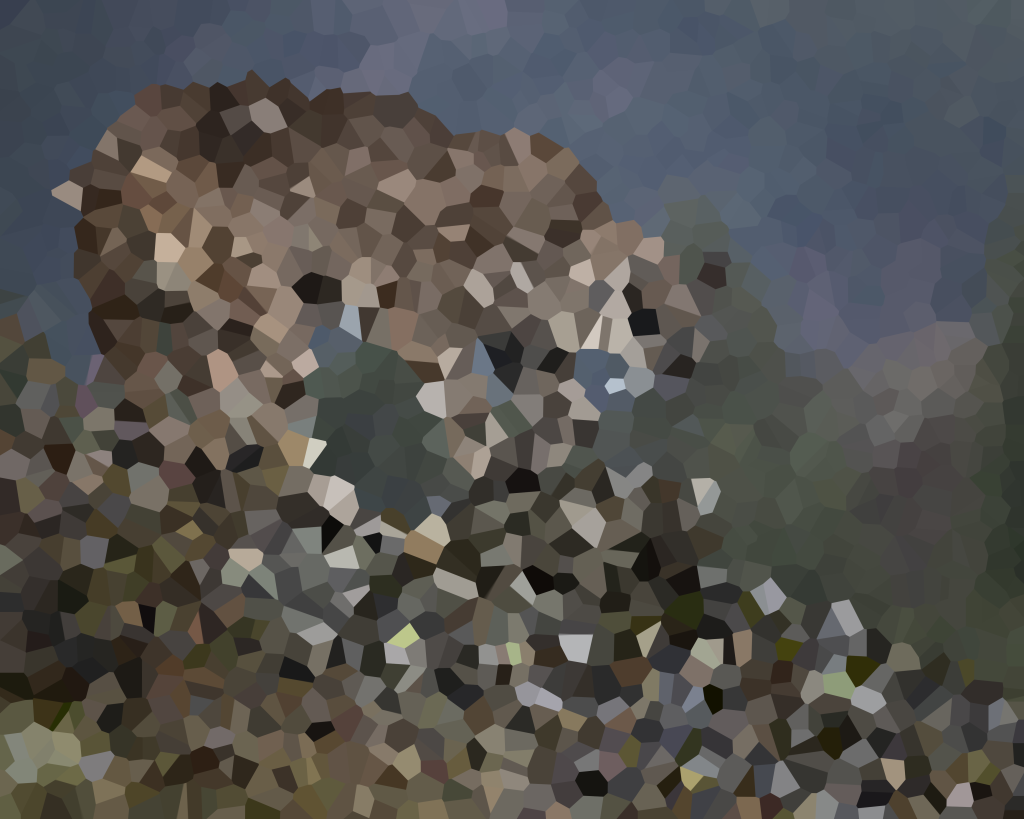
Let’s put your identification skills to the test! Can you figure out what is hidden in this picture? Make your guess in the comments.


These butterflies aren’t just pretty, but they can actually fly!
Step 1: Unfold both of your paper clips so they’re straight.
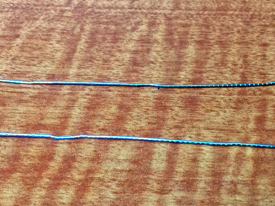
Step 2: Take one of the paper clips and grasp it at the center with the pliers. Bend the wire around the pliers making a loop. You want to make sure the loop is in the middle and not off to one side.
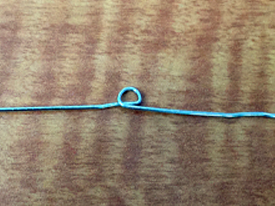
Step 3: Bend the two ends of the wire downward so that the ends and the loop are on a 90-degree angle.
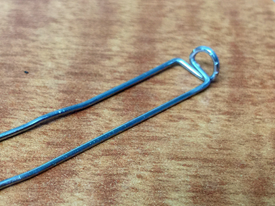
Step 4: Grasp the end of one side of the paper clip with the pliers and bend it outwards. Next, use the pliers to grasp the wire just before the bend you just made and bend it inward. Do the same with the other side.
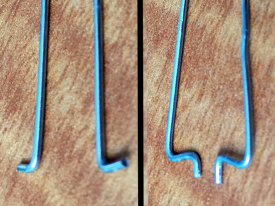
Step 5: Take the second paper clip and grasp it at the center with the pliers. Bend the wire around the pliers making a loop.
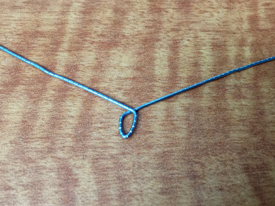
Step 6: Make two sets of butterfly wings out of construction paper and markers. You can use this template as a guide.
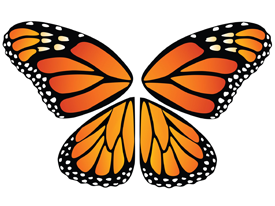
Step 7: Attach the bottom wings to the first paper clip and attach the top wings to the second paper clip. You can use glue, tape, staples, or whatever works for you!
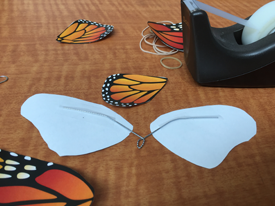
Step 8: Pull the elastic through the loop and stop when it’s halfway through.
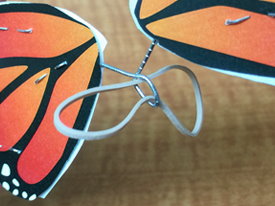
Step 9: Feed the elastic band and the loop of the second paper clip through the loop of the first paper clip. Stretch the elastic band down to the bottom of the first paper clip, hooking it around the bent ends. There should be some tension in the elastic, but it shouldn’t be so tight that you can’t twist it.
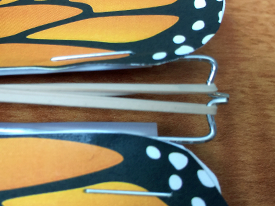
Hold the bottom piece with your fingers and twist the top piece until there is a lot of tension on the elastic band without breaking it. Next, hold the butterfly by the joint (the part where the two paper clip loops meet) and when you’re ready, throw it into the air and watch it fly away!

New Challenge alert! This time we’re teaming up to say goodbye to plastic waste. Look for “Rangers vs Plastic” in the Challenges section of the Earth Rangers App!

If being climate-friendly were a sport, plastic waste would be off the team! Not only is it bad for the planet, animals, and us, but it’s just about everywhere. It’s been found in the water we drink, the food we eat, and even the air we breathe. This unsportsmanlike behaviour won’t stand! Join this Challenge and help us kick plastic waste out of the game for good!
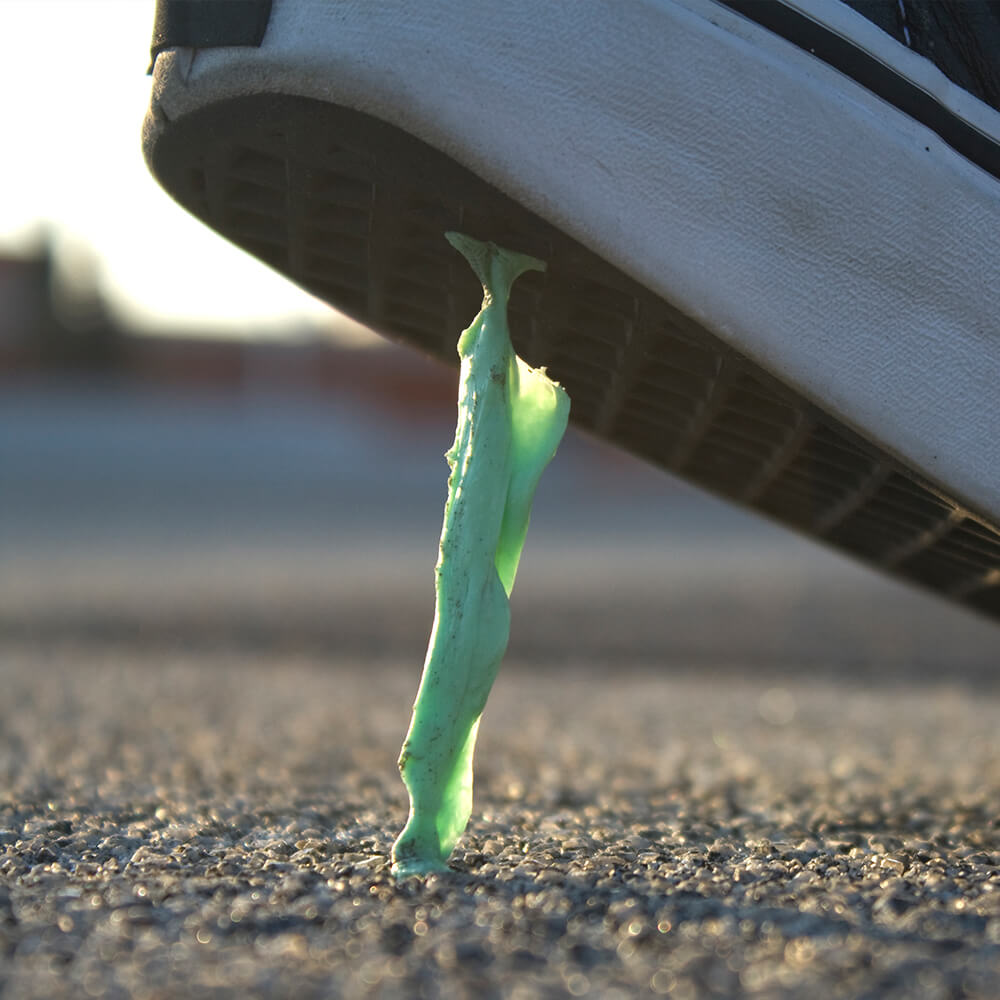
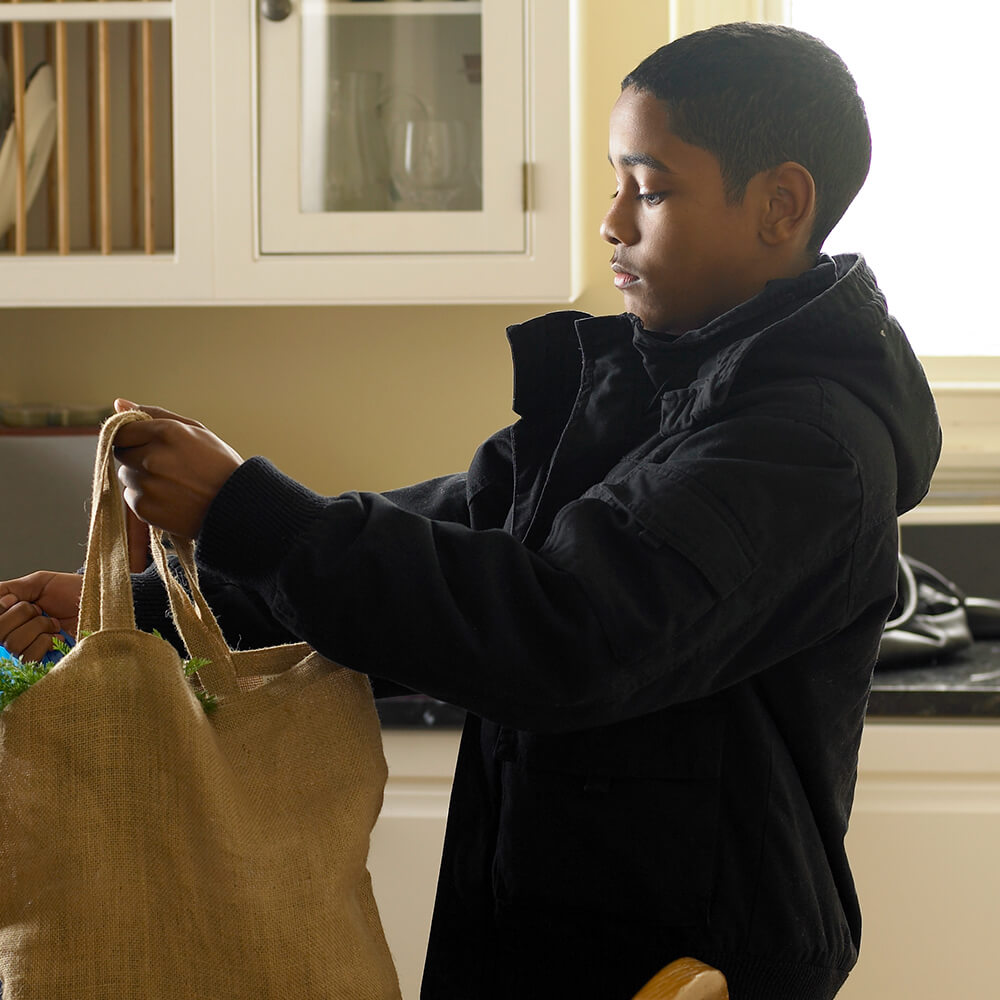
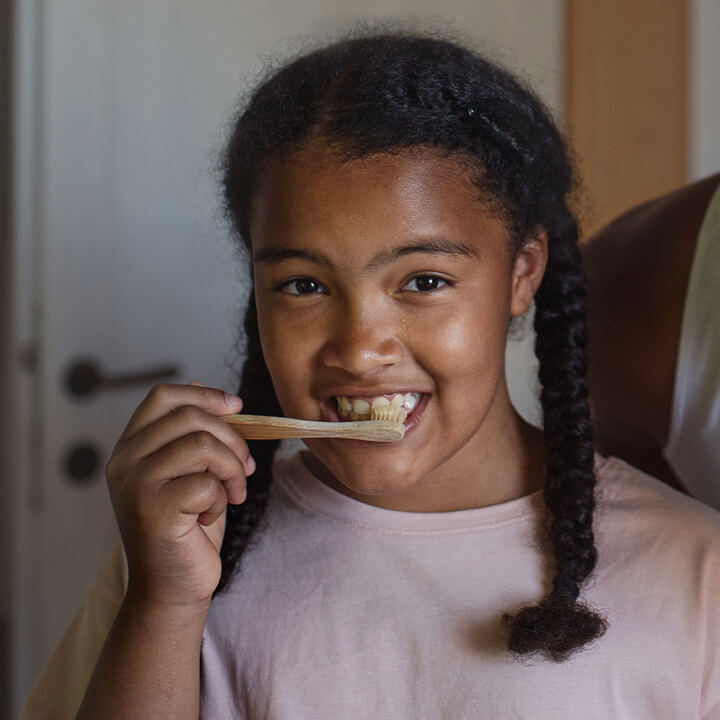
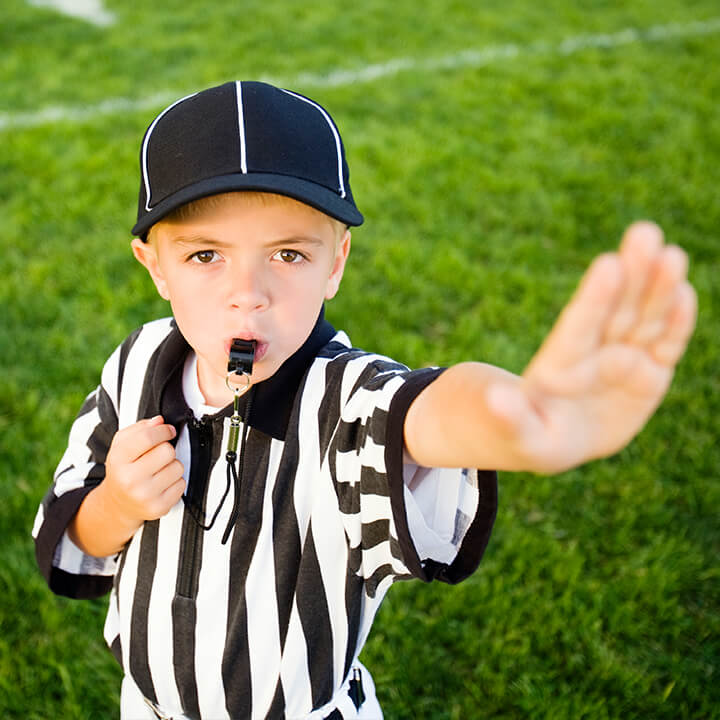
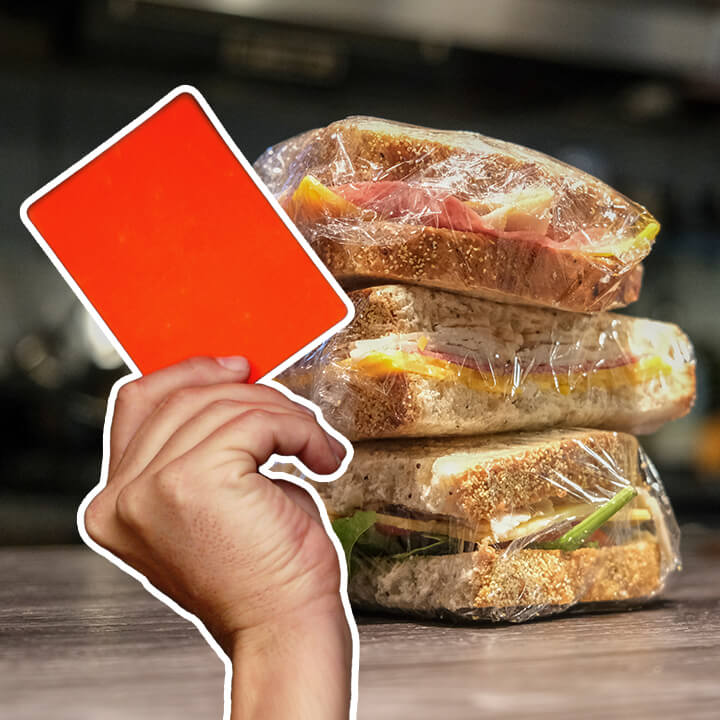
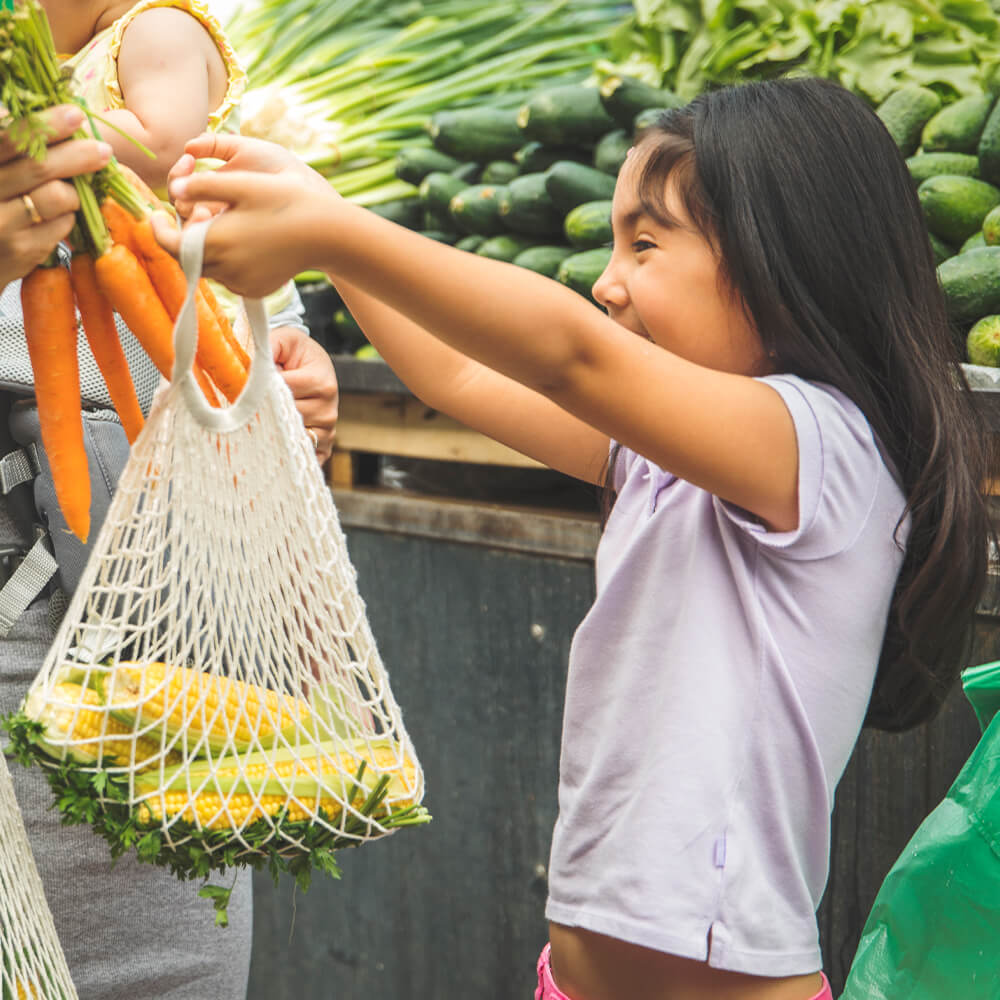
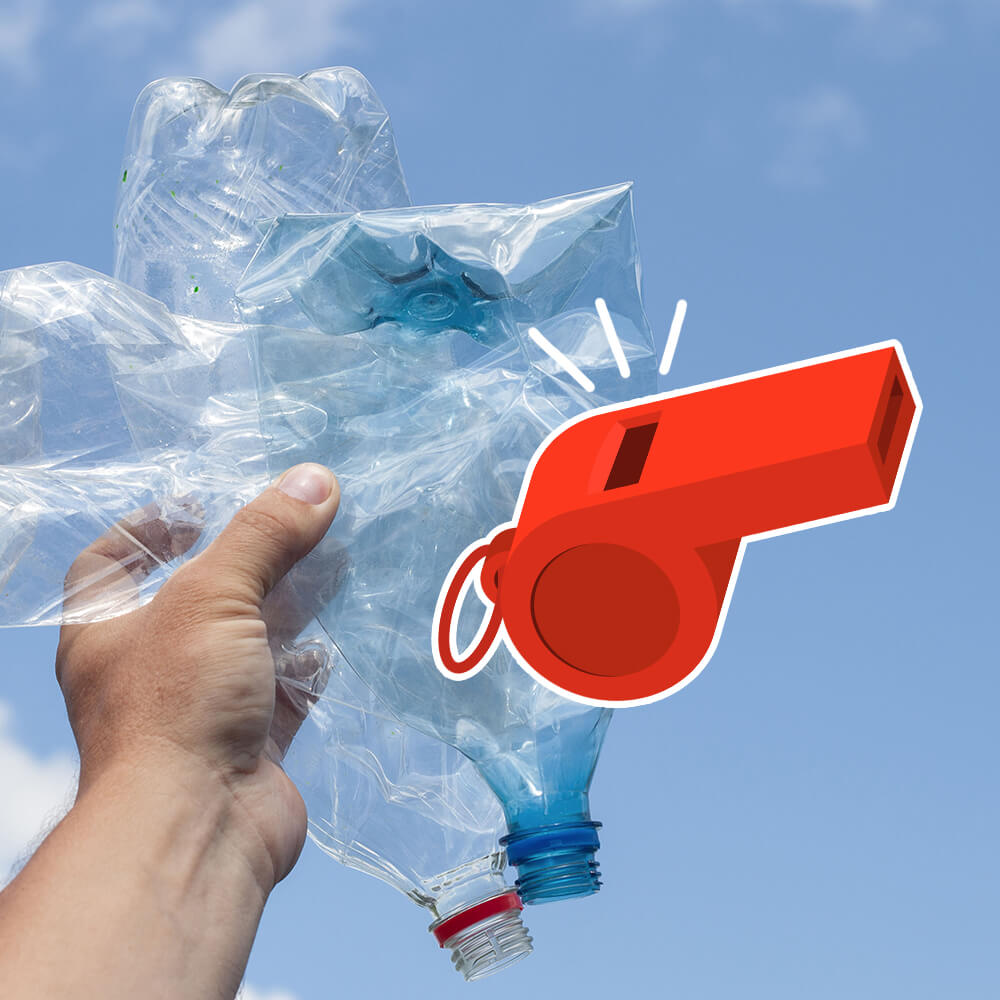
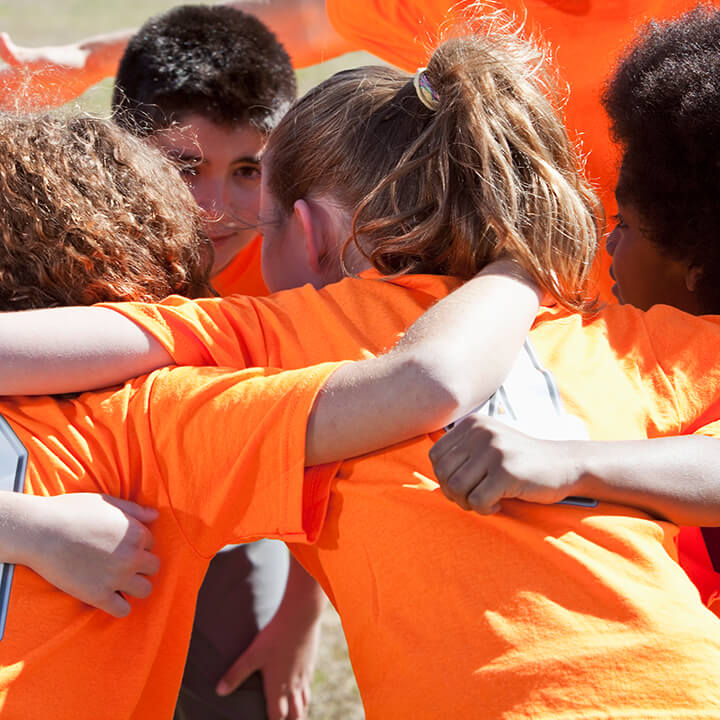
Join Team Ranger as we work together to defeat Team Plastic! Every habit you log will get us one step closer to reaching our goal of logging 125,000 habits! When we reach this goal, a donation will be made to help ringed seals. But that’s not all! Everyone who helped us get there will earn a free ringed seal digital adoption kit too! We can hear the crowd cheering “hip, hip, hooray” already!
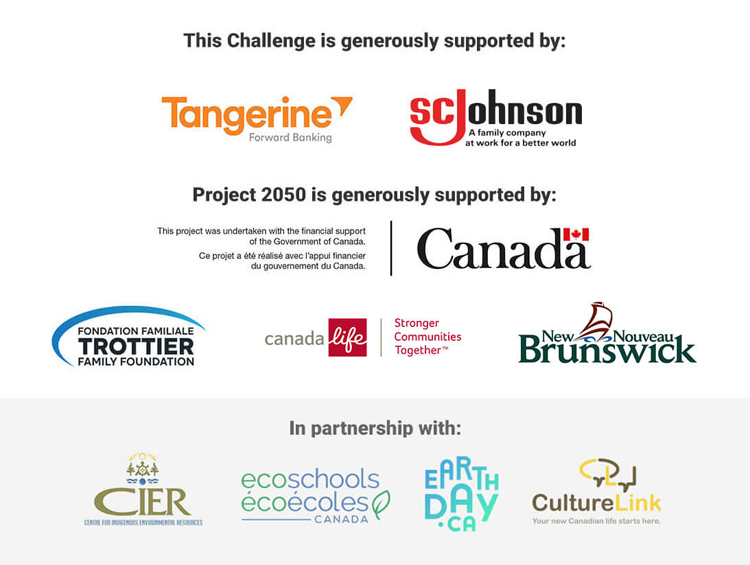
If being climate-friendly were a sport, plastic would be off the team! Earth Rangers has launched a NEW Project 2050 climate-friendly Challenge and the focus this time is on plastic. We know plastic can be found in the water we drink, the food we eat, and even the air we breathe! It’s time to kick plastic waste out of the game for good!
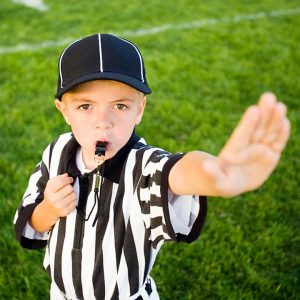
The goal of every Challenge is to empower kids to make small changes in their daily routine. We encourage Earth Rangers to start new HABITS and make them stick – like putting gum in the penalty box for starters! Most gum has something called “gum base”. It’s made from a mix of plastic and chemicals. It’s the secret behind gum’s chewiness. The problem is that we spit our gum out into the environment A LOT! It’s the second most common type of litter, after cigarette butts. In the app, kids can log each day they go without chewing gum and they’re off to the finish line. This is just one example of the climate-friendly habits featured in our new Challenge.
You might have guessed by now; we’re running with a sports theme! We’re convinced it’s a slam dunk that Earth Rangers will emerge victorious. So find out more about how your kids can avoid a plastic bag foul and red card for lunchtime litter by encouraging them to join the Rangers vs Plastics Challenge in the app.
Project 2050 is named after Canada’s climate goal of net-zero greenhouse gas emissions by 2050.
| Welcome to our continuing series featuring interviews with the behind-the-scenes experts here at Earth Rangers! We’re excited to share stories and insight about the work we do directly from the source. |

Meet Joanna Patouris, the Senior Climate Change Program Manager in charge of our Project 2050 program. Project 2050 is inspired by Canada’s goal of achieving net-zero emissions by 2050. When it comes to climate-friendly Challenges here at Earth Rangers, Joanna is our go-to person!
| Q. Tell us a little bit about your background as Climate Change expert? |
| A. My passion for climate change governance and diplomacy grew the more I explored the topic from different angles. I quickly began to understand that climate policy decisions that directly impact people’s lives, and shape the future of our planet, were made by a group of people around a table. I had such a curiosity about how these decisions are made, and what their outcome (or lack thereof) means for people on the frontlines of climate change. I found myself gravitating towards climate justice issues – specifically around human rights, gender justice and climate-induced displacement. While my experiences working on climate change have varied significantly, I remain committed to amplifying the voices, demands and efforts of people living on the frontlines of climate change, and to supporting and facilitating climate action. |
| Q. How did that path lead you here to Earth Rangers? |
| A. After working for several international humanitarian, advocacy, and development organizations, as well as having served as a country delegate to the United Nations Framework Convention on Climate Change for a number of years, I was looking for an opportunity to work on implementing climate action in Canada. While the international climate change diplomacy space was interesting and challenged me in ways that contributed to who I am as a climate advocate, I was looking forward to working with an audience who are slightly more direct: kids. I loved the idea of helping kids feel empowered to take action on their eagerness to help protect our planet. |
 |
| Q. Challenges are a big part of Project 2050. How do they work and what is their impact on climate change? |
| A. Our Challenges are all about incorporating small, climate-friendly habits in your life. We offer themed Challenges with time- sensitive and ambitious goals that can only be achieved by working together. Each Challenge offers a range of habits at various levels of difficultly so that kids can adopt the habits that work for them. I’m often asked what makes Challenges different than Missions. Missions are awesome in the way they encourage children to do things on their own or with family and friends. Challenges encourage kids to work together as a community towards a common goal. We want kids to experience what it’s like to make small changes in their own life while making change by working towards a shared goal. By providing kids with an understanding that they too can help protect the planet, we can stimulate their passion, and creativity for climate-action. |
| Q. Tell us about the decision to focus on habits for children. |
| A. We all have habits, routines, and things that we do without putting much thought into it. As we go about our routines, we might not realize that some of our habits can have negative environmental impacts. By presenting kids with climate-friendly habits early on, we hope that they will make these part of their lives as they participate in Challenges and for each day beyond. We can never underestimate the power of a small daily habit! |
 |
| Q. Climate change is an overwhelming problem, so how do we talk about it to children while being mindful of adding to eco-anxiety? |
| A. Kids should not bear the burden of responsibility of solving the climate change problem. Instead, we want to empower and motivate kids to make small changes at home, school and in their communities. It goes without saying that the impact that kids or adults for that matter, can achieve as individuals versus governments or corporations differs tremendously, and so does their responsibility to do so. But there’s so much to be done! The underlying message is that every single one of us can play a part to help tackle climate change. |
| Q. What do you like best about your job?! |
| A. I love that we are building a program that empowers kids to be proactive and come together in community to contribute to climate action in whatever capacity they can. Challenges are evidence that everyone can do something and we can make a difference working together. |
 |
| Q: What’s a climate fact you keep sharing at parties? |
| A. Our planet is warming. We’re contributing to the problem – that it is us! The situation is serious and most importantly, we can still do something about it. The detail to which I get into depends on the gathering I’m at! |
| Q: What would you tell a young person who might be interested in following a career path in the field of climate change? |
| A. Climate change is such a far reaching problem and affects people in so many different ways, that the climate movement needs a wide variety of skills to tackle the issue. Think about what you’re interested in or care about; chances are there’s a very good fit for you in the climate movement. Yes, we need scientists, but we also need communicators, writers, engineers, social scientists, economists, artists, health care experts, and others just as much! I’d encourage kids to learn more about climate change, ask questions, and just go for it! |
The sun helps power us every day. It keeps the planet warm and lights up the sky. We even use its powerful rays to generate electricity. The plant and animal kingdoms also use the sun in clever ways. Let’s take a look at some examples.
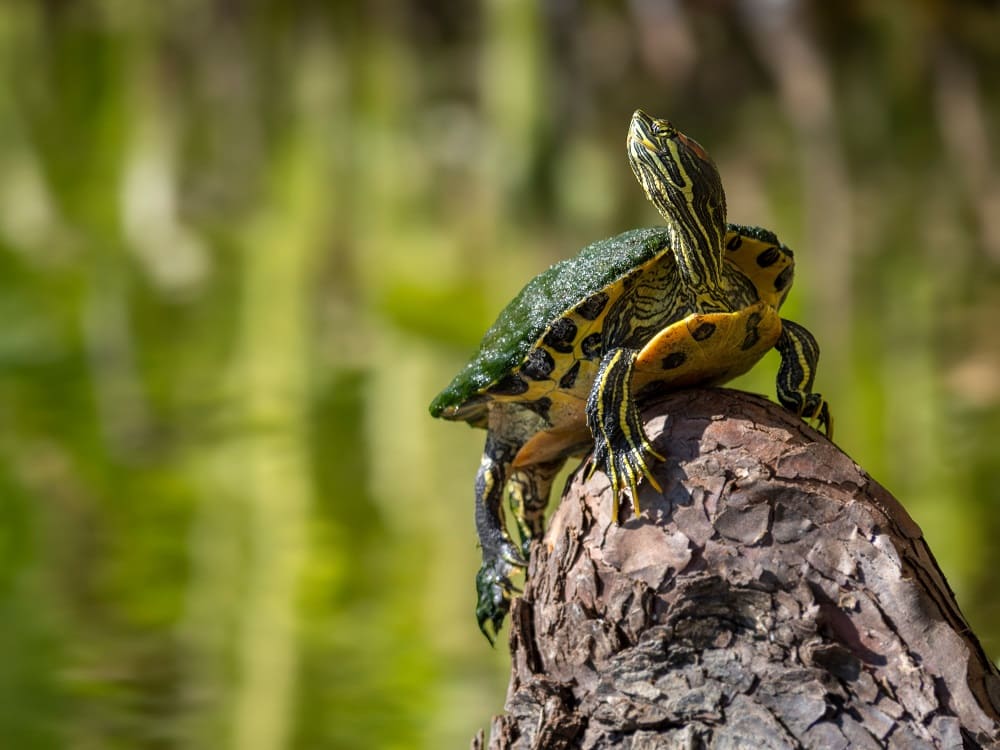
Have you ever seen a turtle sitting on a log in the sun? What about a frog hanging out and catching some rays? They are actually using the heat from the sun to warm up. Reptiles and amphibians are ectotherms (or cold-blooded). This means their body temperature changes with the temperature outside. If they get too cold, a nice spot in the sun is the answer.
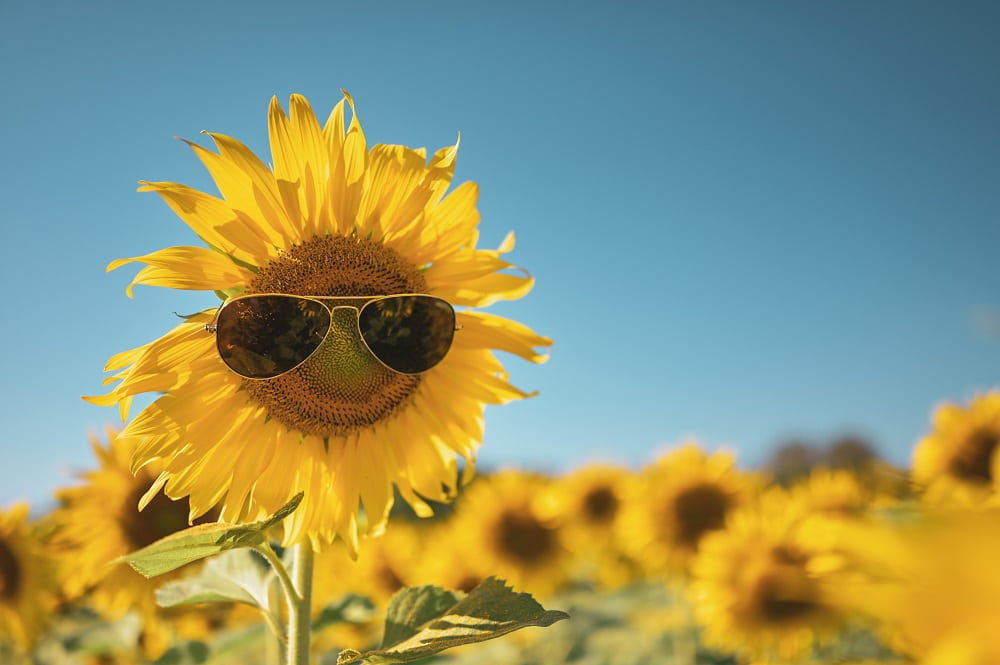
And of course, we can’t forget about plants! They definitely need solar power—as anyone who grows plants knows. That’s because plants use sunlight for photosynthesis. This is a process that lets them turn sunlight into nutrients. Plants use the nutrients to grow big and healthy.
Now let’s look at solar-powered flight. No, we’re not talking about airplanes here. We’re talking about migrating birds! Some birds use the position of the sun (among other cues) to help keep them on the right track as they fly. Some other animals that use the sun for directions are sandhoppers, desert ants, and even some sea turtles. Isn’t solar power cool?
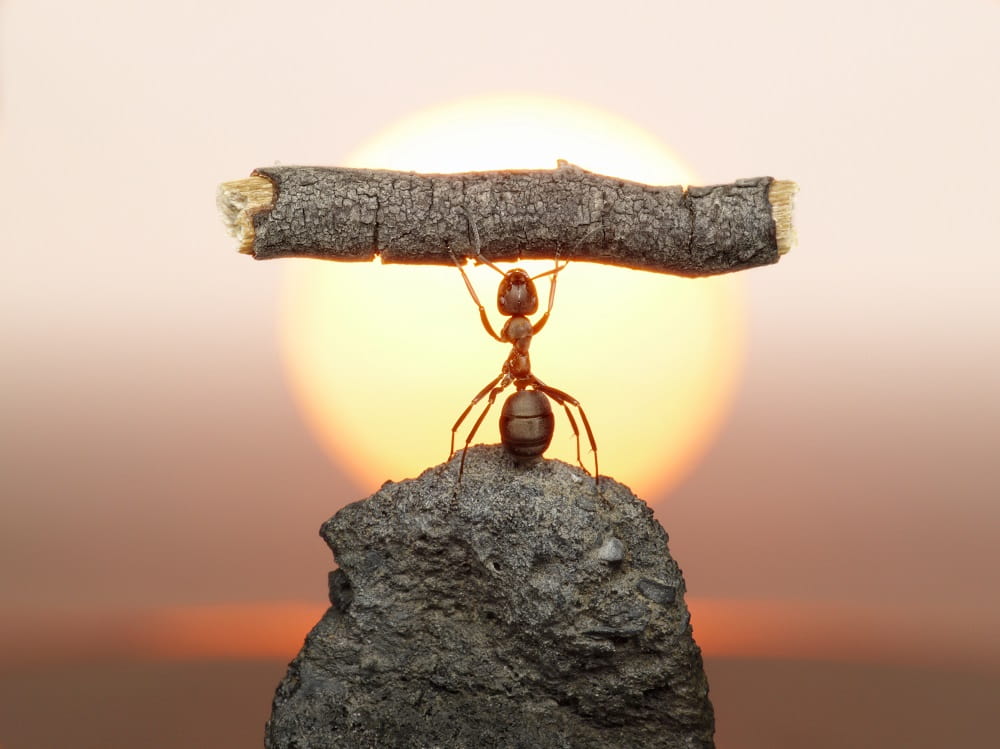
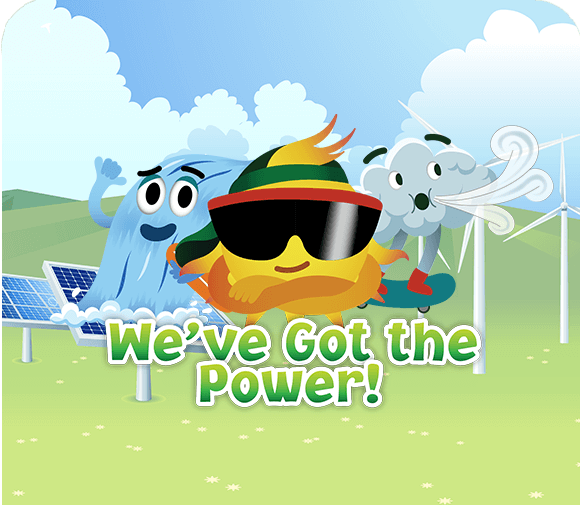

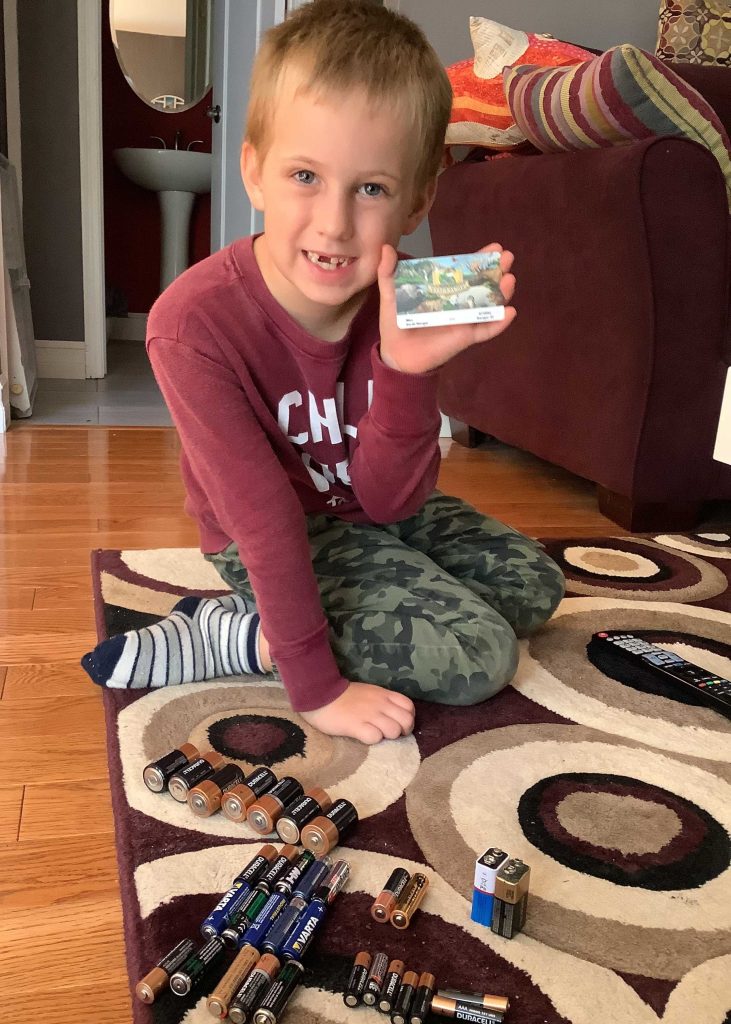
Earth Rangers is thrilled to announce our growing partnership with one of North America’s leading battery recycling organizations. We have signed a three-year partnership agreement with Call2Recyle – a non-profit organization we have worked closely with for many years.
“We’ve seen huge success over the years with battery recycling drives in schools in British Columbia, Saskatchewan, Manitoba and Prince Edward Island. We’re very excited to bring this great initiative to schools in Ontario in 2023 with Call2Recycle, Inc.” said Tovah Barocas, President of Earth Rangers. “I’ve literally seen kids spell their entire names out using hundreds of used batteries they’ve collected – batteries that very likely would have ended up in a landfill otherwise!”

The new agreement helps educate students in Ontario about the importance of battery recycling, and motivates families to adopt battery recycling habits.
“We are committed to creating a cleaner, safer environment in Ontario for all generations, present and future. We understand the importance of educating Ontario residents at a young age to ensure adoption of responsible, lifelong habits when it comes to sustainability,” said Joe Zenobio, President of Call2Recycle Canada, Inc. “
A central interactive element of this program is the Battery Blitz contest, which has Canadian elementary schools compete within their province to collect the largest volume of used household batteries for recycling. The contest provides students with an engaging way to learn and adopt safe battery recycling habits and instills a sense of connection with the environment. Approximately 100 Ontario schools are expected to participate in 2023 with more schools joining through 2025.
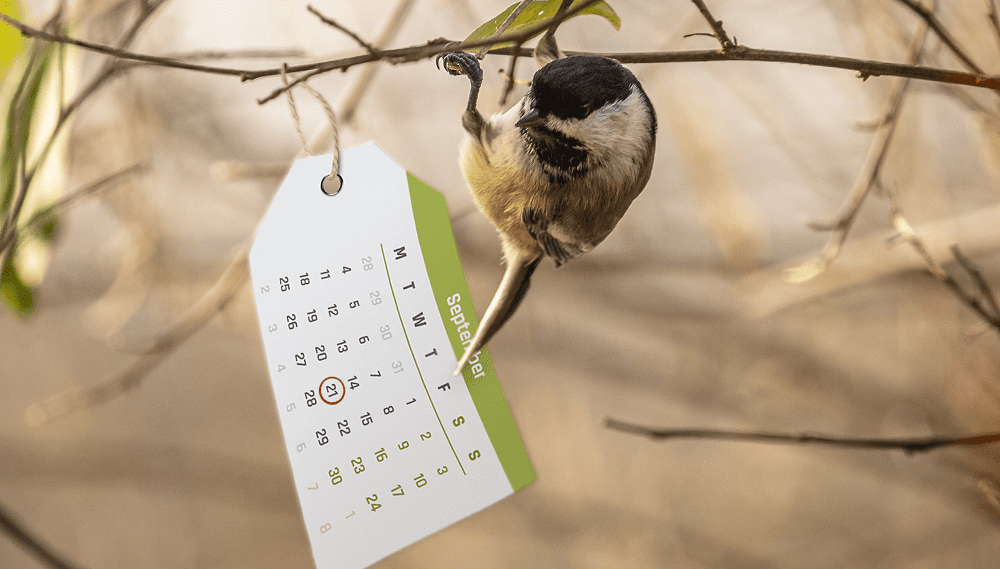
Have you ever wondered how birds know when it’s time to fly south for the winter? It’s not like they count down the days on their mini bird calendars. There must be something else that tells them when it’s time to hit the road…er…sky. There is, and you’re about to find out!
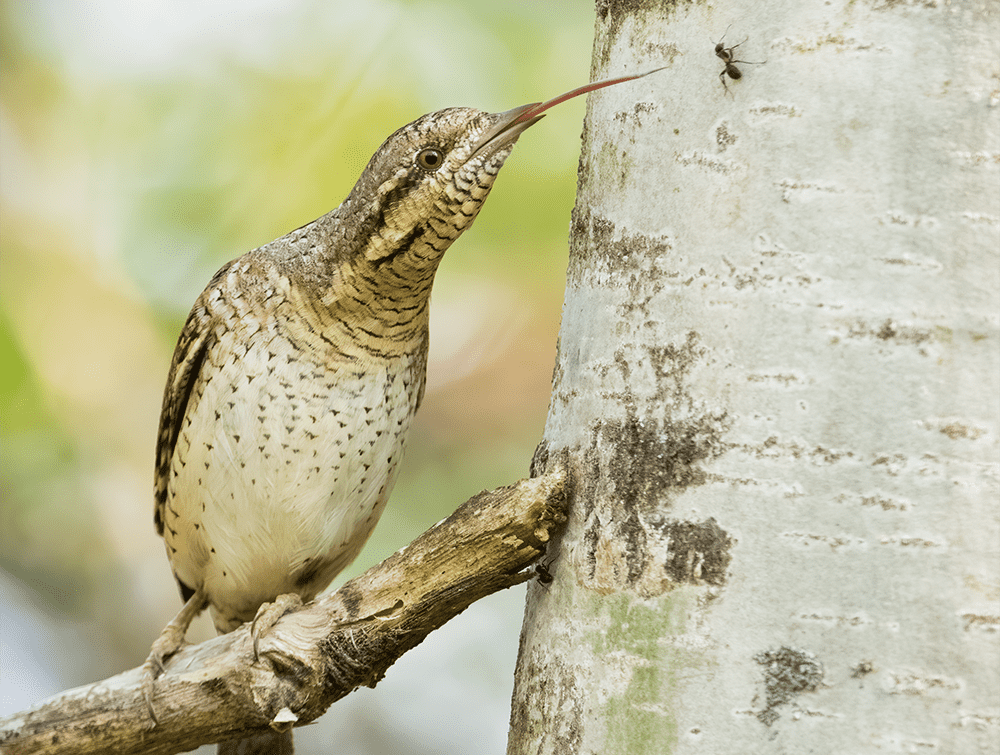
As the weather turns colder, it can get pretty hard to find food. You don’t exactly see many fruits growing or insects crawling when there’s snow on the ground. As food disappears, many birds know it’s time to say “see you later” and head down south. But when they leave depends on what they eat.
Birds that eat insects (insectivores) start their migration in late August or early September. That’s exactly when we start to see fewer insects around. Birds that eat fruit, seeds, and insects (omnivores) stick around longer. They might leave as late as November!
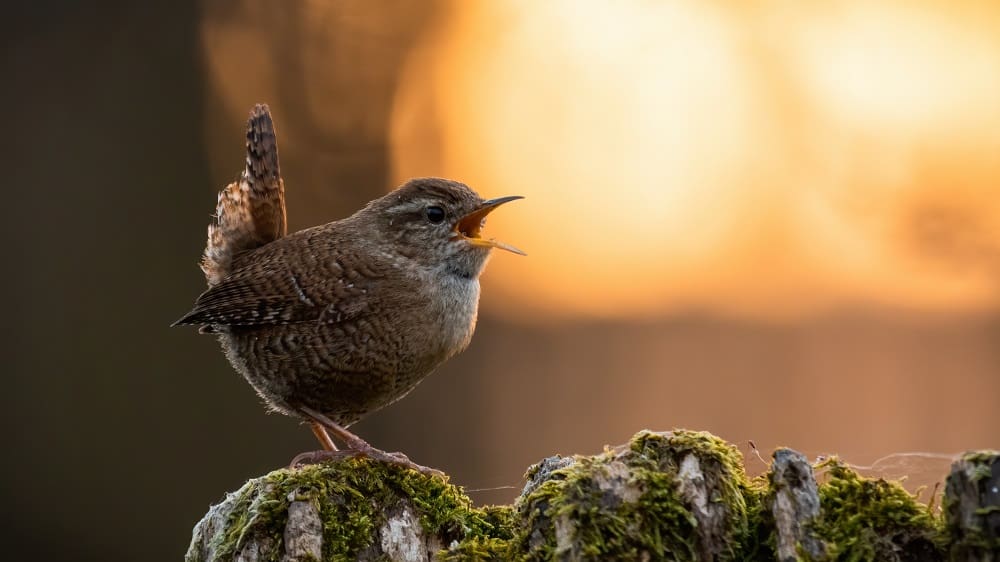
Another way birds know that it’s time to leave is by paying attention to the length of the day. You know how it gets darker earlier in the winter? Birds notice it too. The darkness is a cue for birds that it’s time to head out.
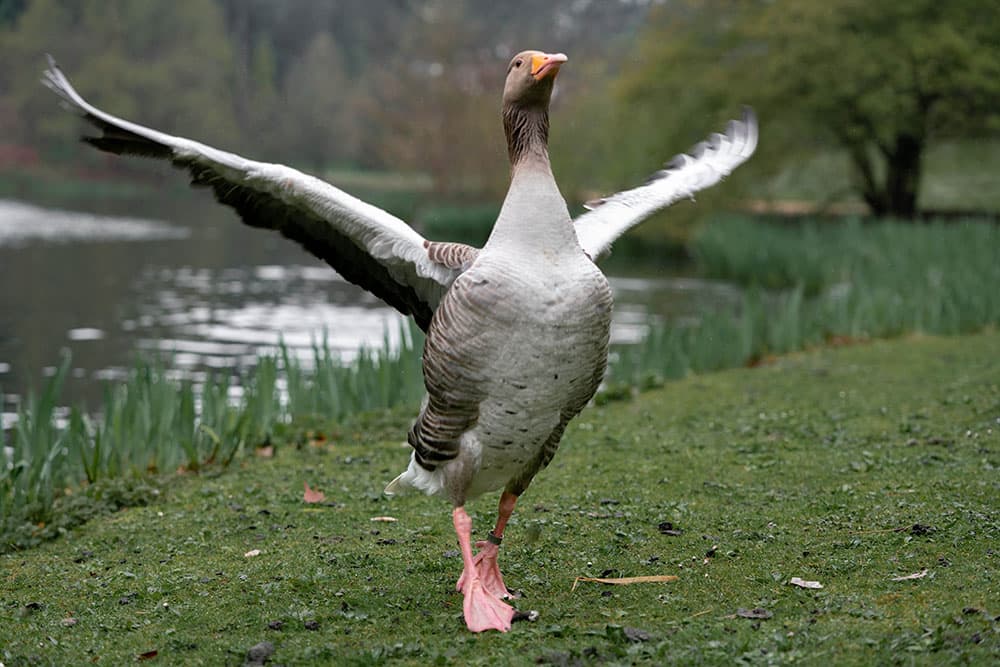
Migratory birds go through something called zugunruhe. No, that wasn’t a sneeze. Zugunruhe is a German word that scientists use to describe a restlessness birds get when it’s time to migrate. Even migratory birds kept as pets go through this. Bird owners might see their birds fluttering and being more active in the spring and fall.
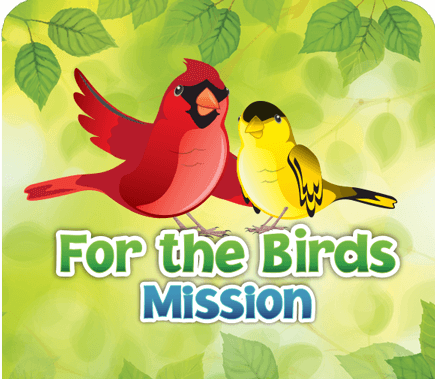

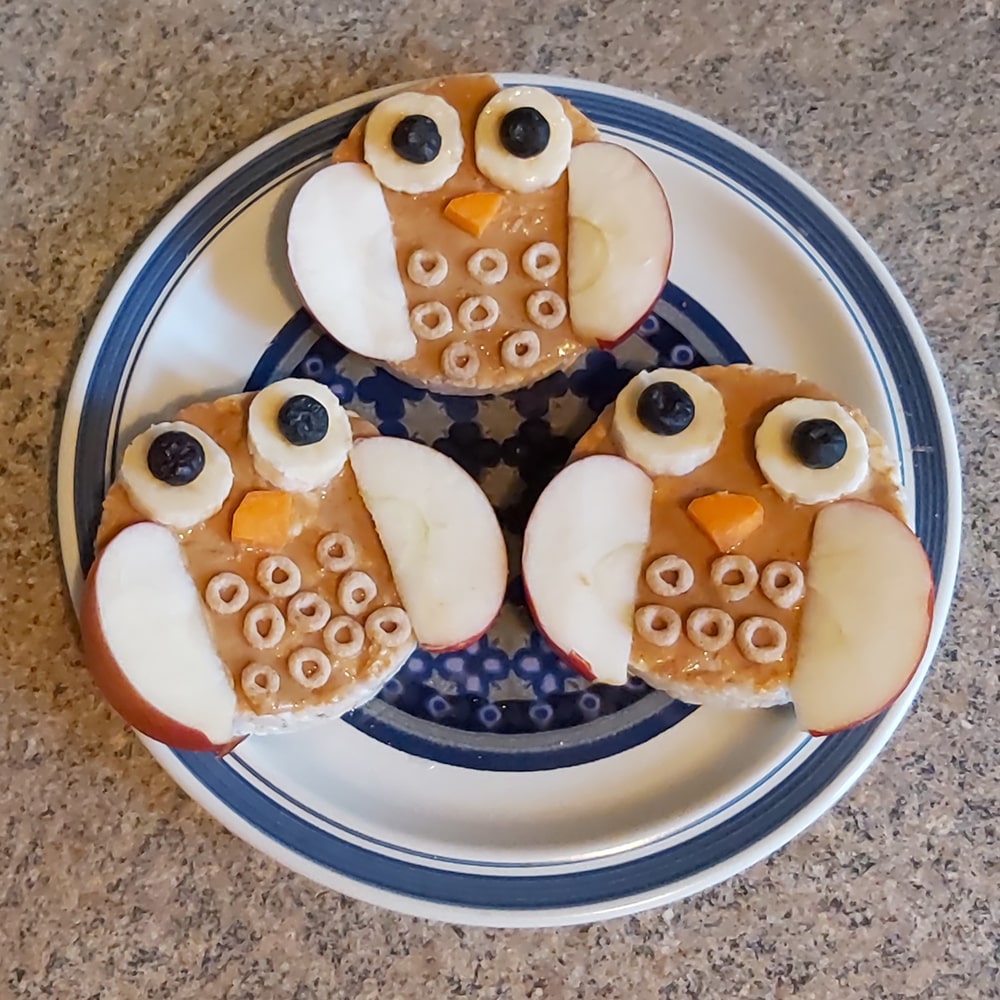
Hoo wants a sweet treat? We’ve got just the tasty snack for those who are owl ears! Every bird can join in because this recipe is a real hoot.
Step 1: Spread peanut butter on one of your rice cakes.
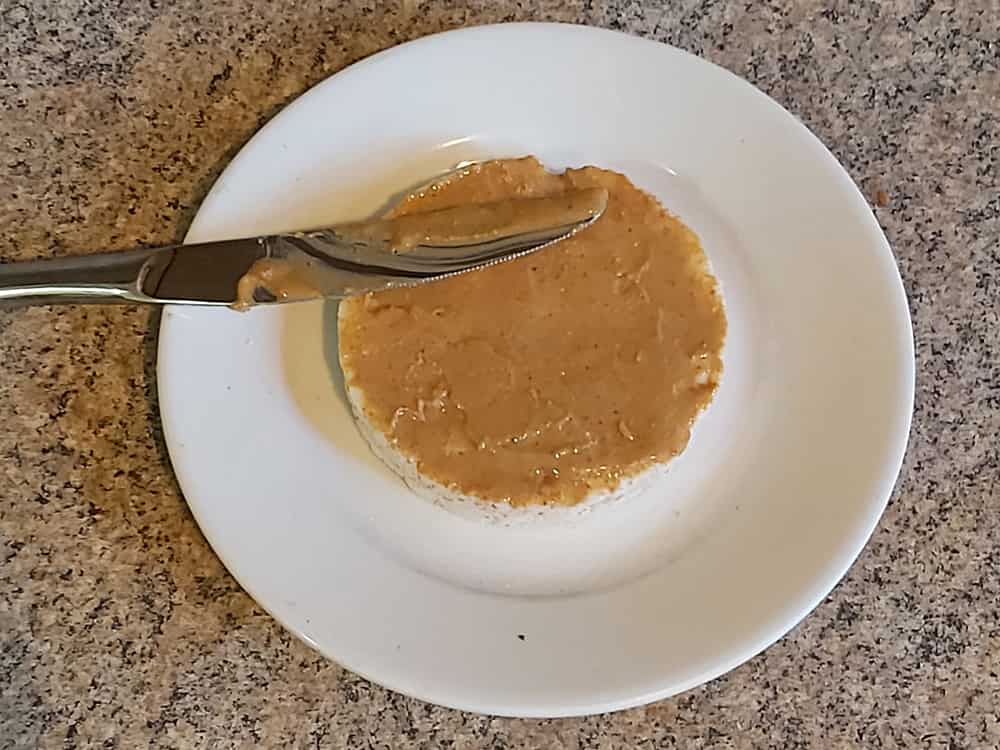
Step 2: Let’s start by giving your owl some eyes! Slice the banana and place two pieces close to the top of your rice cake. Using a tiny dab of peanut butter, stick a blueberry on each banana to make your owl’s pupils.
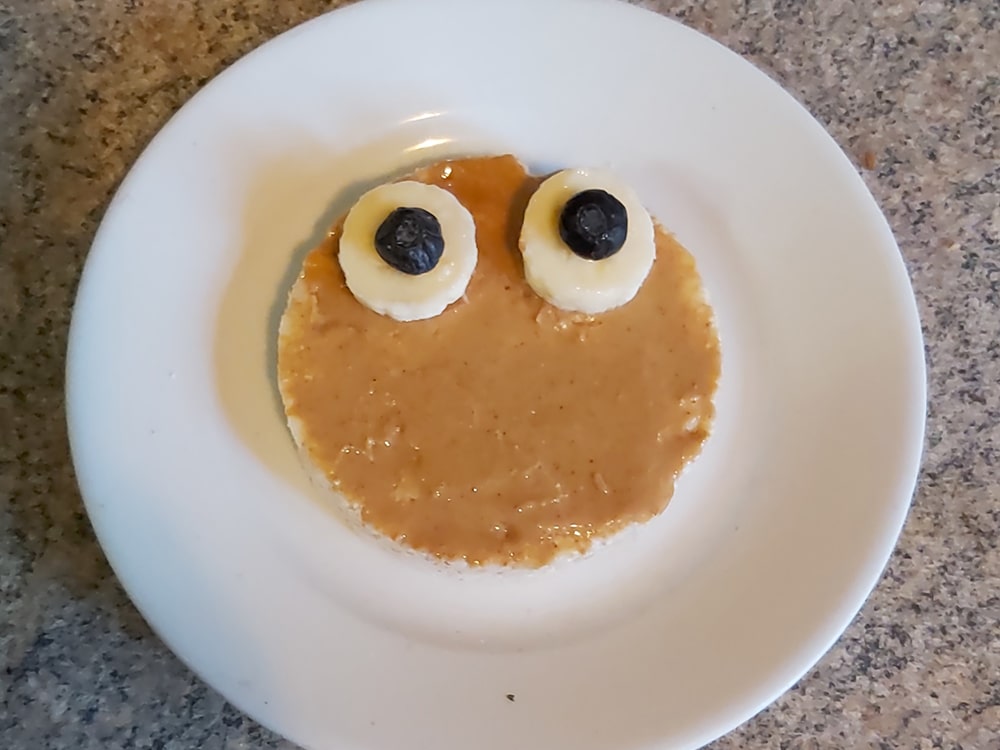
Step 3: Cut your apple into thin wedges. Place them on your rice cake with the peel facing outwards.
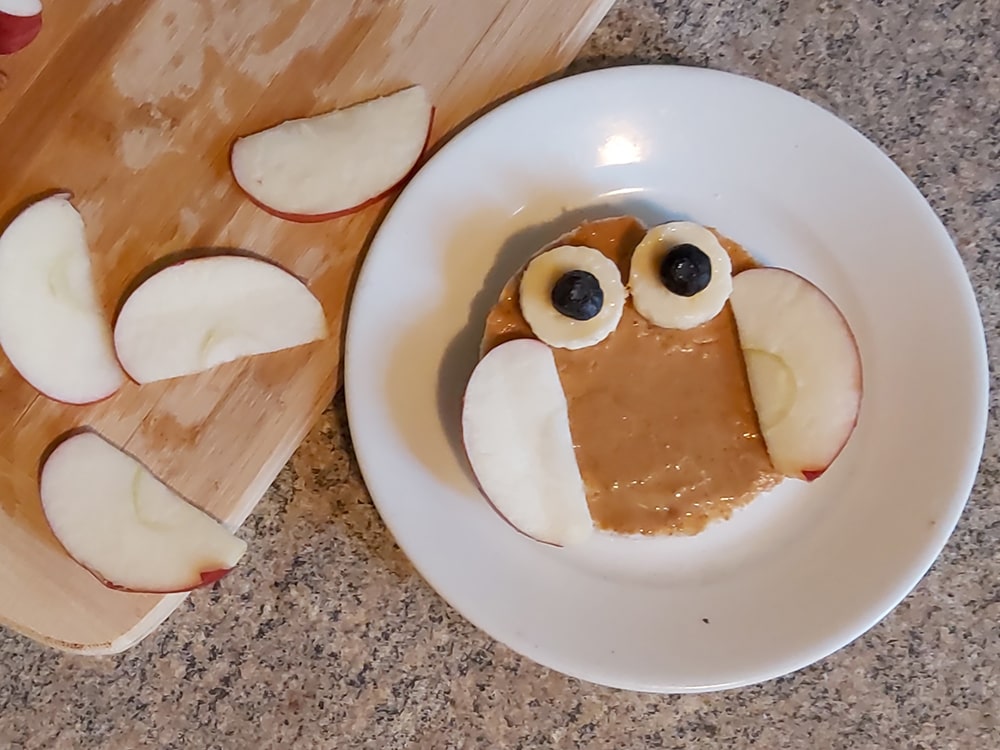
Step 4: Your owl still needs a beak. Peel a carrot and cut a thin slice. Divide that slice into 4 quarters. Place one of those quarters just below the owl’s eyes.
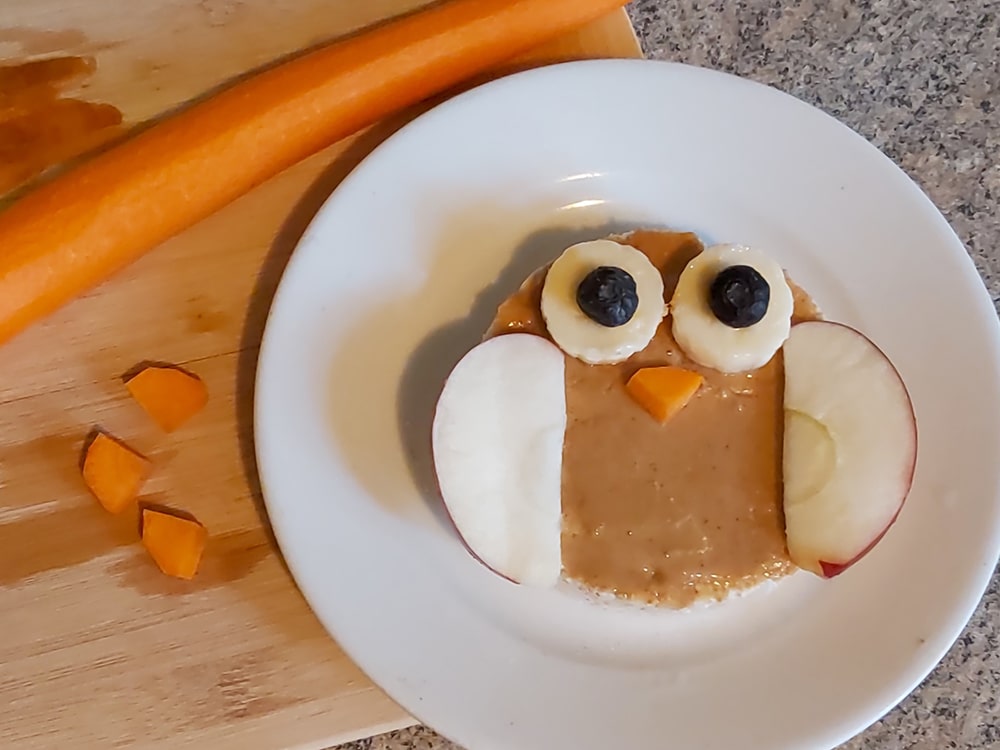
Step 5: Finish off your owl by adding the cheerio feathers!
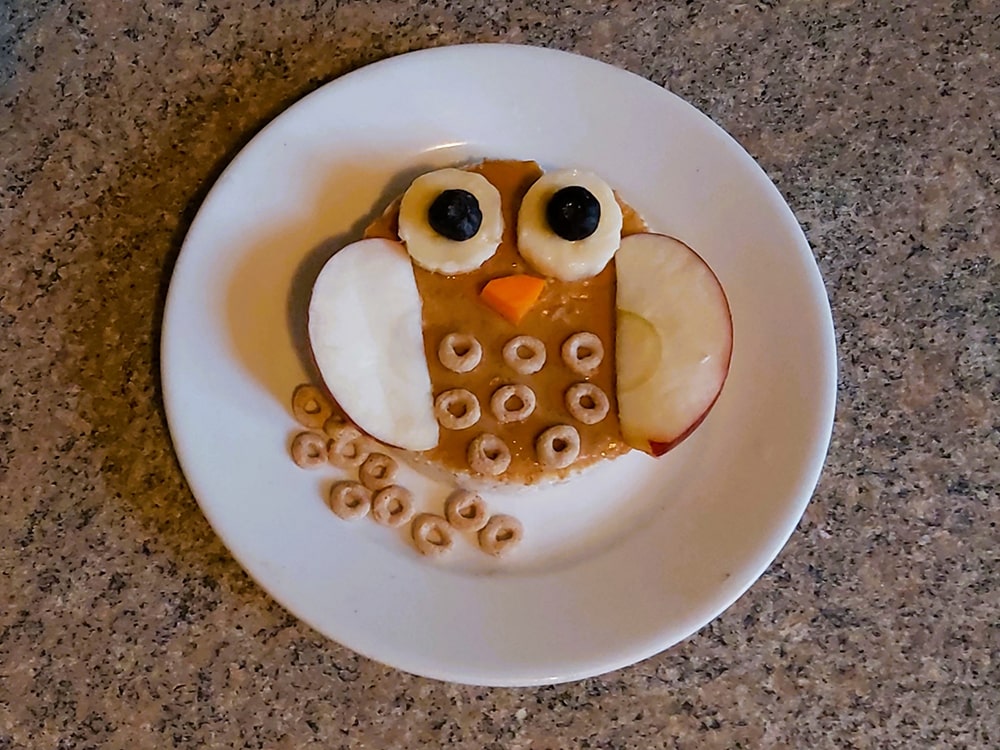

Ah, summer! It’s time for sunshine, beaches, and thinking about Christmas. Yup, you read that right! This summer, we were all about Christmas…the Christmas in July contest, that is!
We teamed up with FPAC and challenged you to create a piece of art that captures the beauty of trees and forests. Animals were drawn, paint was splattered, trees were coloured, and now prizes have been awarded! Check out the winners of the 2022 Christmas in July contest!
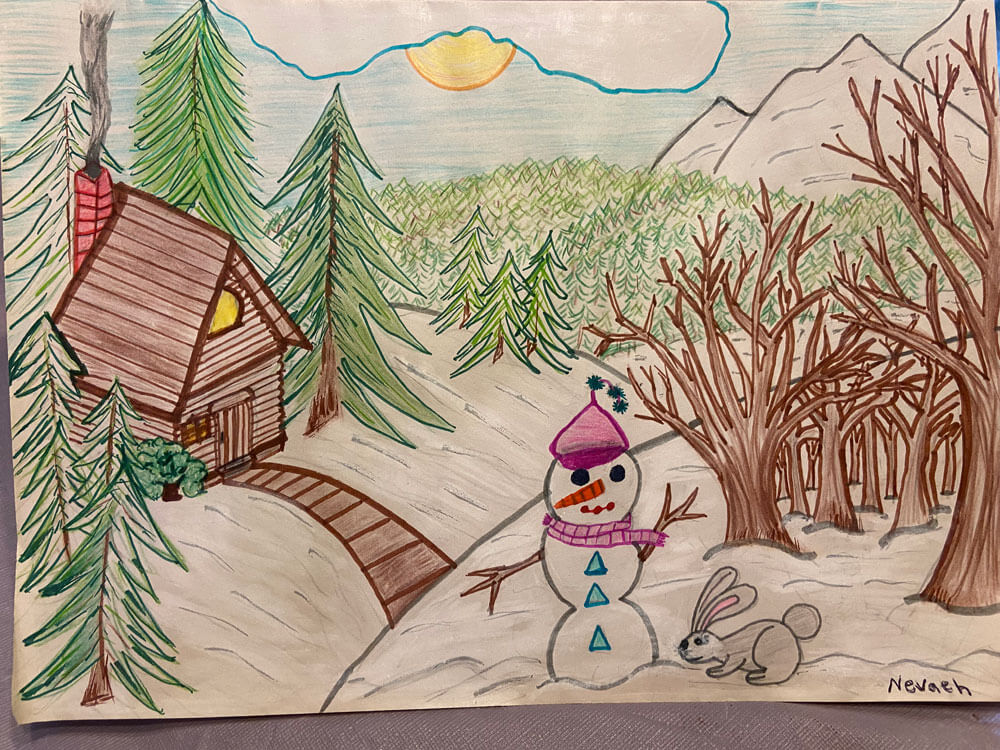
I like this type of forest because it reminded me of Gibson hill. Gibson hill is a walking trail with a huge forest. The cabin reminded me of someone’s cabin they built in the middle of the forest. The view is amazing.
– Nevaeh
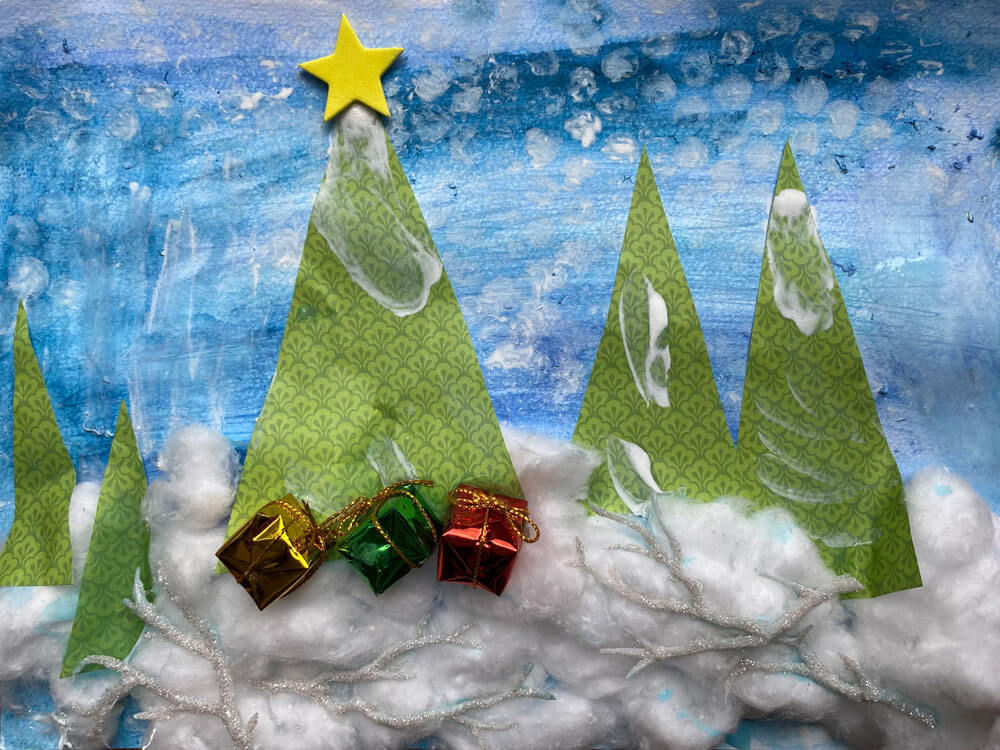
We did a forest collage. First we painted our background with water colours, then we painted bubble wrap to stamp on some snow. We glued on cotton balls for some snowy hills and added paper trees and glittery sticks. Finally for a more holiday feel we added presents underneath a tree and a star for the top. Our picture is entitled “ever green, ever magical”.
– Edwin
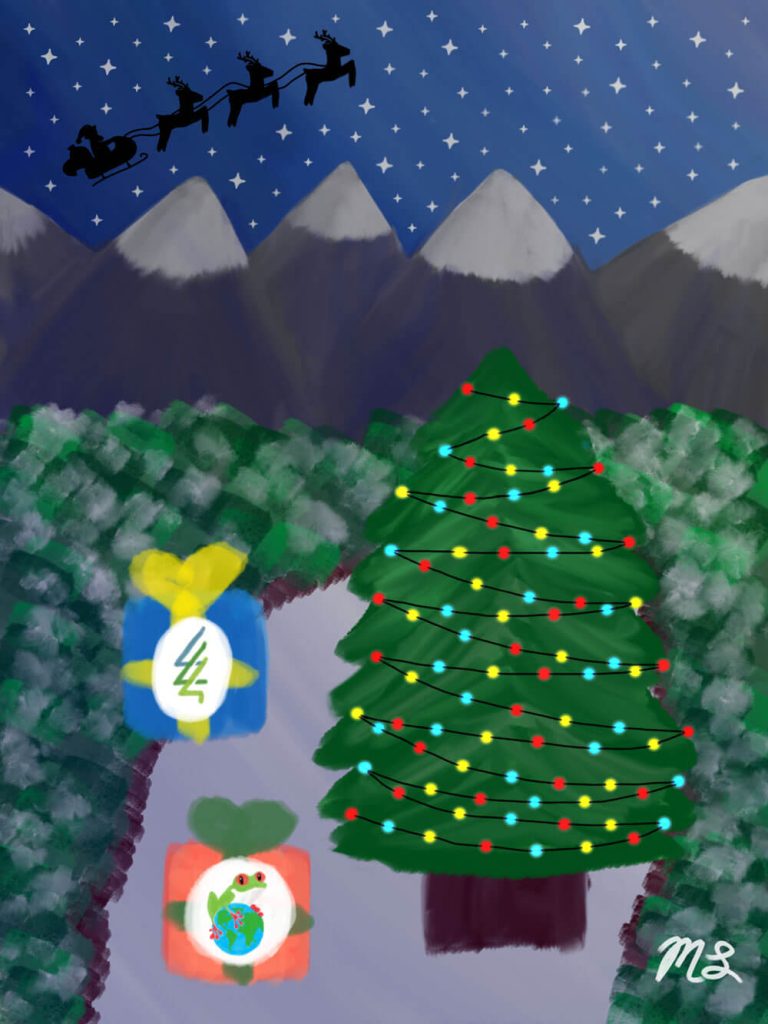
My artwork is a starry night sky with a snow blanketed forest with snow peaked mountains. In the center, there’s a pine tree where lights are decorated. There are two gift boxes beside the tree, one with the Earth Rangers logo, and the other the FPAC logo.
– Mariam
